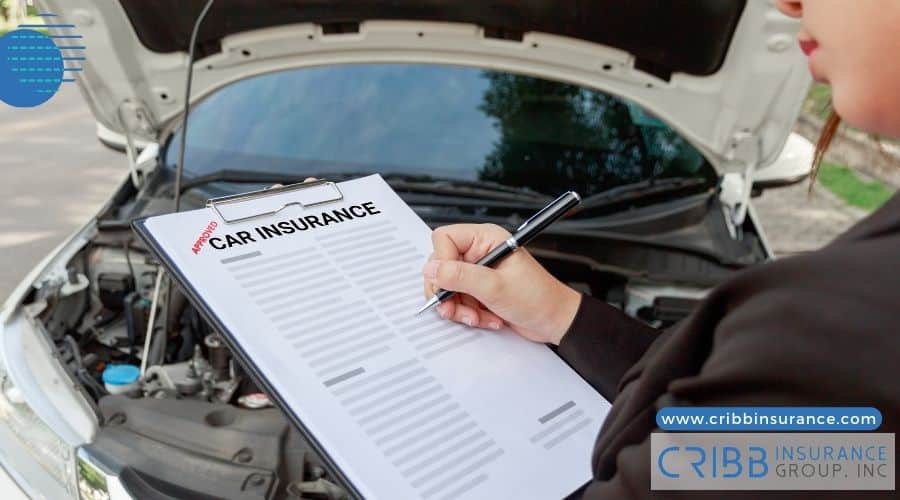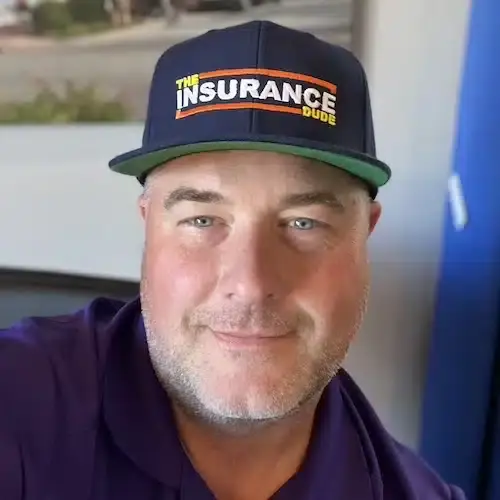Imagine cruising down a scenic route when suddenly, a car swerves into your lane, causing a collision. The aftermath? Extensive damages and mounting medical bills. You soon discover that the costs far exceed the at-fault driver’s insurance limits. This unsettling scenario raises a pressing question: What happens next? Dive with us into the intricate world of insurance limits, the ramifications of surpassing them, and the proactive steps you can adopt to ensure comprehensive coverage. We will also tell you how our auto insurance agents can help.
The Basics of Car Insurance Limits
Car insurance isn’t just a legal requirement; it’s a protective shield against unforeseen financial burdens. Every policy has specific limits, denoting the maximum amount an insurer will pay for a claim. These limits encompass liability coverage, property damage, and bodily injury. But why these limits? It’s a delicate balance. Insurance companies strive to offer affordable car insurance premiums while ensuring adequate protection. They analyze vast data, from accident statistics to repair costs, to set these limits. However, with escalating medical and repair costs, it’s increasingly common for expenses to exceed these boundaries, especially in severe accidents.
The Reasons Behind Coverage Limits In Auto Insurance Policies
Coverage limits in auto insurance policies are established based on a combination of factors. These limits are designed to offer a balance between providing adequate protection to the policyholder and maintaining the sustainability of the insurance model. Factors such as historical claim data, average repair costs, medical expenses, and even regional considerations play a role in determining these limits. By understanding these limits, policyholders can make informed decisions about their coverage needs and ensure they are adequately protected in various scenarios.
Consequences Of Exceeding Insurance Limits
Venturing beyond insurance limits plunges one into a labyrinth of legal and financial complexities. The insurer will cover up to the policy’s stipulated limit. Beyond that? The at-fault driver bears the brunt. This could manifest as wage garnishments, property liens, or even protracted lawsuits. It’s a scenario that underscores the paramount importance of ample insurance coverage. Without it, a single mishap can spell financial disaster.
The Role Of No-Fault Insurance

When it comes to car insurance, some states adopt a no-fault system. In this system, after an accident, each driver’s insurance addresses their injuries, irrespective of who was at fault. This approach is designed to reduce the number of lawsuits and expedite the compensation process. However, it’s essential to note that this system might limit the flexibility in seeking compensation beyond the policy’s confines.
Initial Evaluation In A Car Accident Settlement
Navigating the aftermath of a car accident is a complex process that requires meticulous attention to detail, a thorough understanding of legal procedures, and a strategic approach to ensure the best possible outcome. Here’s a step-by-step breakdown:
Preliminary Investigation
The aftermath of an accident is chaotic. Here, professionals step in to gather all pertinent evidence from the accident scene. This includes photographs, witness statements, and any available video footage. The goal is to paint a clear picture of what transpired, which can be instrumental in establishing fault and determining the extent of damages.
Identifying Responsible Parties
Determining fault isn’t always straightforward. Multiple entities could be at fault, from the other driver to vehicle manufacturers or even local authorities if poor road conditions contributed. Properly identifying all liable parties is crucial, as it broadens the avenues for compensation.
Recording Injury Details
Injuries can range from minor bruises to severe, life-altering conditions. Immediate medical attention is vital. Keeping a detailed record of all treatments, diagnoses, and expenses not only ensures proper medical care but also serves as evidence when seeking compensation.
Submission Of An Insurance Claim
This step involves notifying your insurance company about the accident, providing all gathered evidence, and detailing the injuries and damages sustained. Accuracy is paramount, as discrepancies can lead to claim denials or reduced compensation.
Settlement Talks
Once the claim is filed, settlement talks commence. This involves negotiations between your legal representation and the insurance company, aiming to reach an agreeable compensation amount without resorting to litigation.
Consideration Of Offer Or Preparing For Trial
After negotiations, the insurance company will present an offer. You must decide whether to accept it or prepare for trial, a decision that hinges on the offer’s adequacy and potential trial outcomes.
Discovery Phase
If you opt for a trial, the discovery phase ensues. Both parties exchange information, gather additional evidence, and interview witnesses. It’s a comprehensive fact-finding mission that sets the stage for the trial.
Mediation
Before the trial, there’s an attempt at mediation. A neutral third party facilitates discussions, aiming for an amicable resolution. It’s a final effort to settle without resorting to a court trial.
Trial Process
If mediation fails, the case proceeds to trial. Both parties present their evidence, witnesses are cross-examined, and arguments are made. The outcome rests in the hands of a judge or jury.
Seeking Compensation Beyond Policy Limits
When the damages from an accident exceed the policy limits, victims are not left without options. There are several avenues one can explore to ensure they receive the compensation they deserve:
Filing Claims Through The At-Fault Driver’s Other Insurance Policies
In some cases, the at-fault driver might have other insurance policies, such as umbrella insurance or homeowners’ insurance, which can be tapped into for additional compensation. It’s essential to work with legal experts to explore these avenues and ensure all potential sources of compensation are considered.
Seeking Compensation From Additional Parties Involved
In multi-vehicle accidents or situations where external factors play a role, there might be additional parties who share liability. This could include vehicle manufacturers in case of equipment malfunction or local authorities if poor road conditions contributed to the accident. Identifying and seeking compensation from these parties can help bridge the gap between policy limits and actual damages.
Using Your Personal Insurance Coverage
If the at-fault driver’s insurance is insufficient, victims can turn to their insurance policies. This could include underinsured motorist coverage or health insurance, which can cover the additional costs. It’s essential to review your policy details and consult with insurance experts to understand the coverage extents and limitations.
Taking The Next Steps With Cribb Insurance Group Inc

Knowledge is power. Grasping insurance limits and the potential fallout of exceeding them is indispensable. If you’re on the hunt for insurance agents Bentonville AR expertise, Cribb Insurance Group Inc is your beacon. Safeguard yourself, fortify your assets, and cruise with unparalleled peace of mind.
Frequently Asked Questions
What happens if damages exceed the at-fault driver’s insurance limits?
When damages surpass the at-fault driver’s insurance limits, the immediate fallout is that the insurance company will only cover up to its policy limits. The remaining amount becomes the responsibility of the at-fault driver. This could mean out-of-pocket payments or, in some cases, facing legal action from the injured party. It’s crucial to understand that if you’re found at fault and your insurance doesn’t cover all the damages, assets like your home or savings could be at risk. This underscores the importance of having adequate insurance coverage and considering umbrella policies for added protection.
How often do settlements overshoot policy limits?
While most car accident settlements fall within the policy limits, there are instances where severe accidents result in damages that exceed these limits. Such scenarios usually involve significant injuries, long-term rehabilitation, or multiple parties being injured. The frequency of such occurrences is relatively low, but the financial implications can be substantial. It’s a reminder that while minimum coverage might be more affordable, it might not provide the protection needed in more severe accidents.
What options exist if medical bills surpass the at-fault driver’s insurance?
If medical bills exceed the at-fault driver’s insurance, several avenues can be explored. Firstly, victims can turn to their health insurance to cover the excess costs. Additionally, if the victim has underinsured motorist coverage, it can bridge the gap between the at-fault driver’s insurance and the actual medical expenses. If these options are insufficient, legal action against the at-fault driver might be considered. In some cases, exploring payment plans or negotiating with medical providers can also help manage the costs.
How does a no-fault insurance system impact claims exceeding limits?
In a no-fault insurance system, each party’s insurance covers their damages, irrespective of who caused the accident. This means that even if you weren’t at fault, your insurance would cover your damages up to your policy limit. However, if costs exceed these limits, options can become limited. Some states with no-fault insurance have thresholds that, if met, allow victims to pursue additional compensation through legal action. It’s essential to be familiar with your state’s regulations and consider purchasing additional coverage to ensure comprehensive protection.
What’s the game plan if you’re at fault and damages eclipse your insurance?
Being at fault in an accident where damages exceed your insurance can be daunting. Initially, your insurance will cover up to its limits. After that, you’re personally responsible for the remaining amount. This could lead to wage garnishments, asset seizures, or liens on property. It’s advisable to consult with a legal expert to understand potential ramifications and explore possible solutions. Proactively, consider reviewing your insurance coverage to ensure it aligns with your assets and potential risks, and think about adding an umbrella policy for added security.





